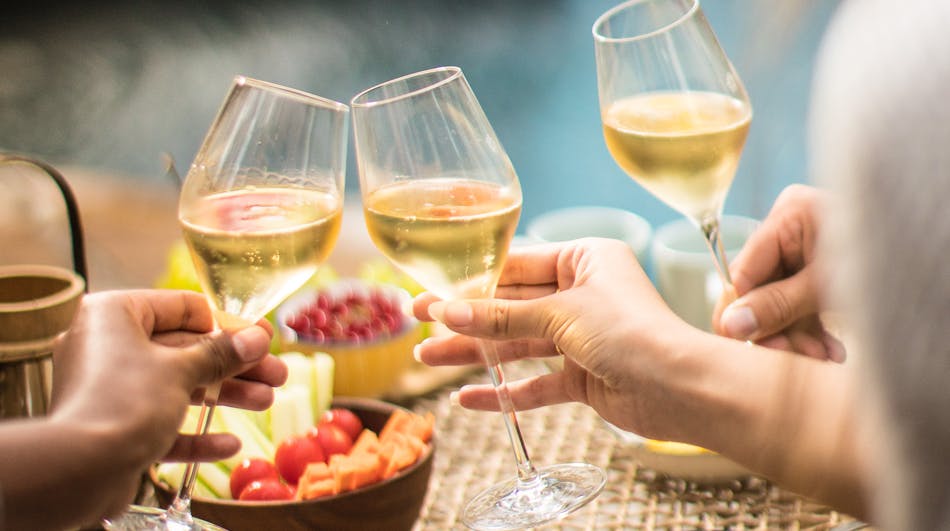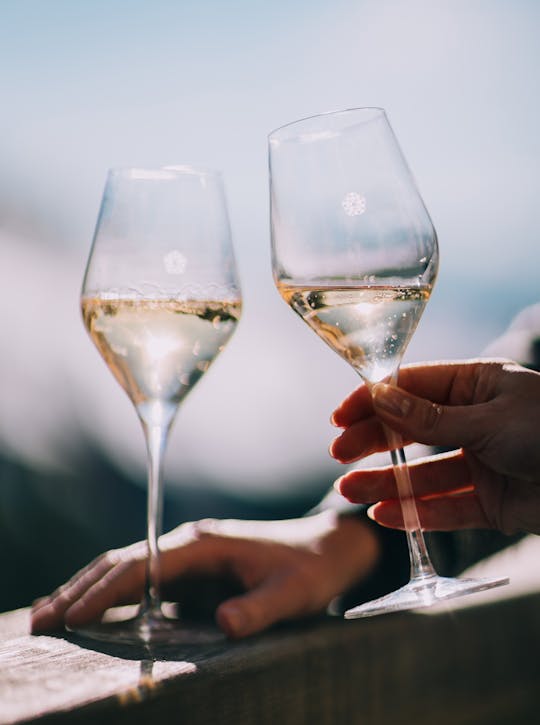Which glass should you drink Champagne from?

Each tasting is unique. Appreciation of wine is subjective and there is no single truth. There are as many versions of this pleasure as there are tasters. Everyone has their own experiences, cultures, sensitivities and beliefs that make a wine unique to everyone.
Furthermore, external factors can influence the taste. Other than the wine and the individual, the environment plays a very important role. The time of year, the weather, where it is tasted, the occasion, the number of people, the light, the temperature, the atmospheric pressure, the health of the tasters and the time of tasting, to name a few, are all factors influencing the perception that each person may have of the wine. Another important element to consider is the type and shape of the glass used.
The ideal temperature for tasting Champagne is between 7 and 9°C. It is advisable to use a glass with a stem so the heat from your hand doesn’t warm the wine.
Parts of a stemmed glass
The shape of the glass allows a wine to reach its full potential and has the following parts:
- The diameter and thickness of the rim (1)
- Headspace (2)
- Shoulder (3)
- Bowl (4)
- Base of the bowl (5)
When tasting Champagne, the base of the bowl is very interesting because it allows the bubbles to appear and the fizziness to develop.

The bowl is the contact area between the glass and the wine. The larger the diameter of the bowl, the greater the surface area for the wine to come into contact with the air. Therefore, the release of aromas will be more consistent. The shoulder is the upper limit where the wine should be filled to, During agitation, it also allows disruptions and small breaks of the surface to appear allowing the wine to oxygen and the aromas to release more. The shoulder can be more or less angled to enhance or limit these aspects. The headspace in the glass will allow the aromas to concentrate and allow the drinker to take in the aromas released by the wine at the rim of the glass. Finally, the taster experiences, recognises and describes a wine’s bouquet by drinking from the rim of the glass. If the rim diameter is smaller than the shoulder diameter, the aromas released by the wine will be more intense.
The capacity of the glass has a direct impact on its size. The larger the capacity, the larger the glass and the more likely the flavours will be concentrated.

Are Champagne flutes the ideal glass?
Flutes promote effervescence thanks to their narrow, vertical shape, accentuating the freshness of the wine. Flutes bring a real elegance to the tasting and are used on many celebratory occasions. Flutes release a medium intensity of aromatic molecules in low concentration.
The Absolu glass
This type of glass promotes effervescence, releasing the aromas of champagne, and increases the aromatic intensity during tasting. This is the best shaped glass for tasting Champagne:
- The base of the bowl has a wide angle for effervescence.
- The bowl is quite tall and has a large diameter, resulting in a large surface area for aeration, allowing aromas to be better released.
- The shoulder has sharp angles for an intense aromatic release during agitation.
- The headspace is very tall, and the diameter of the rim is a third smaller than the shoulder. This allows the aromas to concentrate in the headspace allowing the drinker to be able to fully appreciate them.

Did you know?
At Nicolas Feuillatte, the creative oenology committee experimented with around a dozen glasses to determine which one was best for the wine. The perfect glass was chosen.